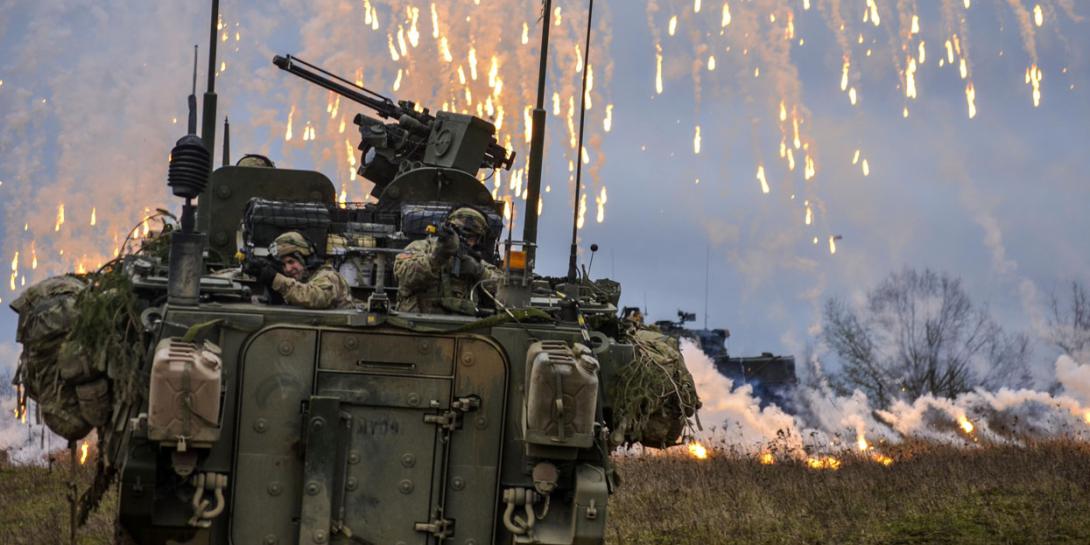Building a Battle-Hardened Network
The U.S. Army is leading the charge on the military’s multidomain battle concept—but will federal IT networks enable this initiative, or inhibit it?
The network is critical to the Army’s vision of combining the defense domains of land, air, sea, space and cyberspace to protect and defend against adversaries on all fronts. As Gen. Stephen Townsend, USA, remarked to AFCEA conference attendees earlier this year, the Army is readying for a future reliant on telemedicine, 3D printing and other technologies that will prove integral to multidomain operations. “The network needs to enable all that,” said Townsend.
But the Army’s network, as currently constituted, isn’t quite ready to effectively support this ambitious effort. The current network is extraordinarily complex, with a mixture of systems that may be ill-equipped to help the Army reach its goals. In response, Maj. General Peter Gallagher, USA, director of the Army's Network Cross Functional Team, has called for a flat network that converges these disparate systems and is more dynamic, automated and self-healing.
The Army has employed a three-part strategy to solve these challenges and modernize its network, but modernization can open up potential security gaps. As the Army moves forward with readying its network for multidomain battles, its IT professionals will want to take several steps to ensure that its network operations remain rock solid and secure.
Identify and Sunset Outdated Technologies
The Army may want to consider identifying and sunsetting outdated legacy technologies that can introduce connectivity, compatibility and security issues. Legacy technologies may not be easily integrated into the new network environment, which could pose a problem as the service consolidates its various network resources. They could slow down network operations, preventing troops from being able to access vital information in times of need. They could also introduce security vulnerabilities that may not be patchable.
Preparing for the multidomain battle concept provides the Army with an ideal opportunity to move on from older network technologies and invest in modern solutions. These solutions can provide a good foundation for a future network that is fast, easy to manage, battle-ready and secure.
Update and Test Security Procedures
It’s imperative that Army IT professionals maintain strong and consistent security analysis to ensure the efficacy of new network technologies. This is especially true during the convergence and integration phase, when security holes may be more likely to arise.
It’s not enough to simply write and document a cybersecurity plan. IT administrators must assess, analyze and test all of their tool sets and capabilities—then assess, analyze and test again. Consider utilizing real-world operational testing, event simulation and red and blue team security operations. Networks are evolutionary, not revolutionary, and these processes should be implemented every time a new element is added to the network.
Monitor the Network, Inside and Out
The Army’s multidomain network will be expansive and tasked with securely and dependably facilitating and supporting operations across many different fronts. The ability to identify and fix potential faults in real time will be essential.
IT professionals will need to strengthen their existing network monitoring capabilities to identify and remediate issues, from bottlenecks to breaches, quickly and efficiently. They will need to go beyond traditional network monitoring to adopt monitoring capabilities that are highly agile and scalable, and can be applied across different domains and can support different missions.
Look no further than the Army’s Command Post Computing Environment for an initiative that requires more robust monitoring than typical on-premises monitoring capabilities. Similarly, a network that enables multidomain operations will need to be just as reliable and secure as traditional networks, even though the demands placed on the network will most likely be far more intense than anything the Army is accustomed to handling. A ground troop operating in Kabul will need the same dependability, connectivity and security assurances as a pilot patrolling the skies over Yemen, a soldier watching the seas off the Kuwaiti coast or an officer working at a cyber command post.
For the multidomain concept to succeed, the Army needs a network that can enable the initiative. Building that network starts with modernization and continues with deploying the necessary processes and technologies to ensure that operations are secure and reliable. Those are the core tenets of a network built to handle whatever comes its way, from land, air, sea, space or cyberspace.
Mav Turner is vice president, product strategy, at IT management software provider SolarWinds.





Comments